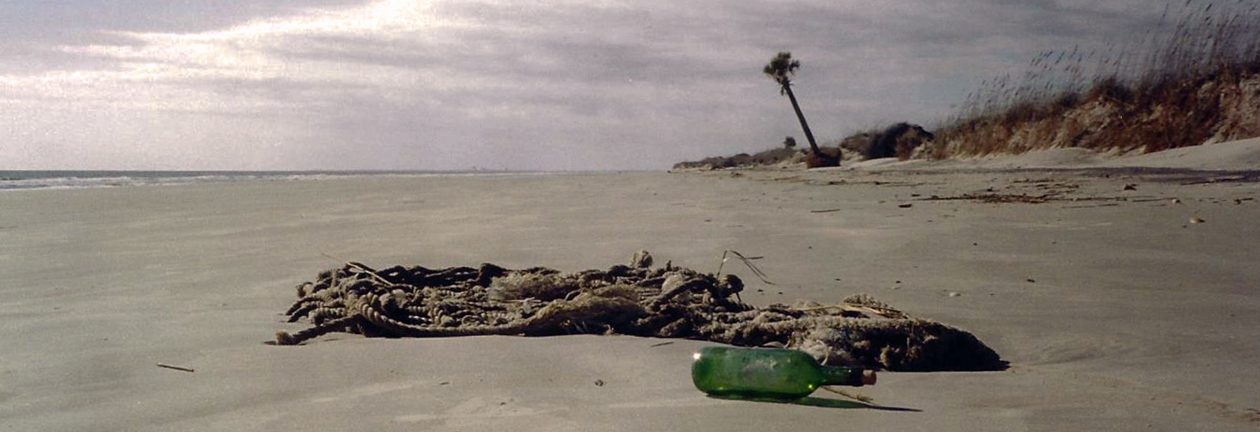Kiev, Ukraine
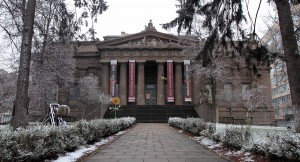
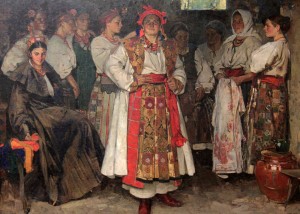
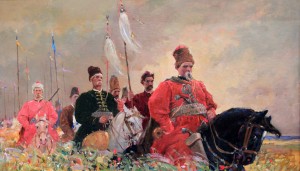
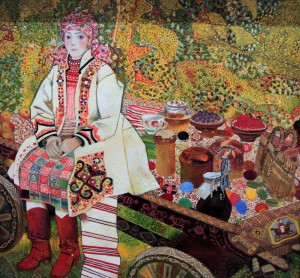
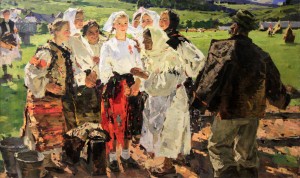
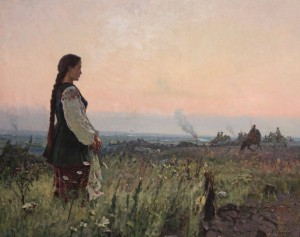
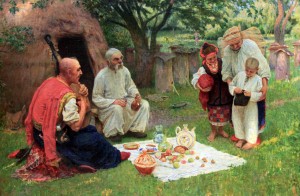
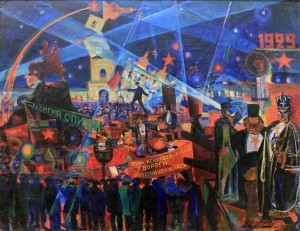
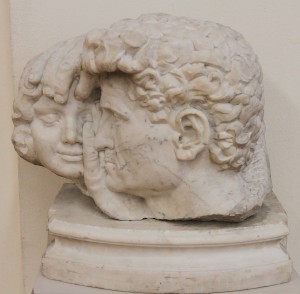

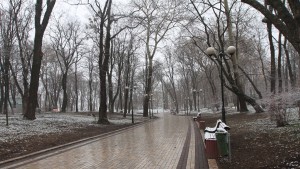
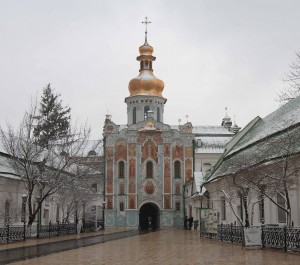
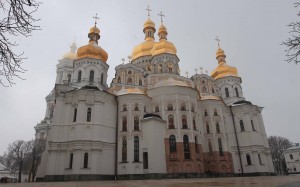
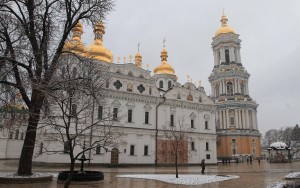
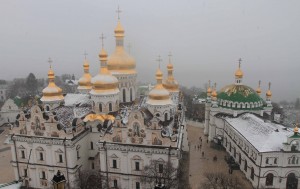
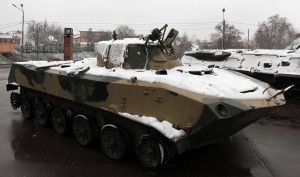
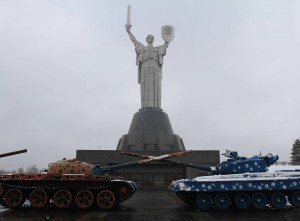
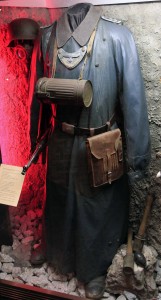
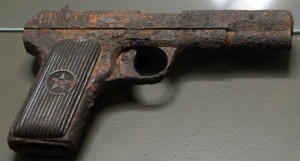
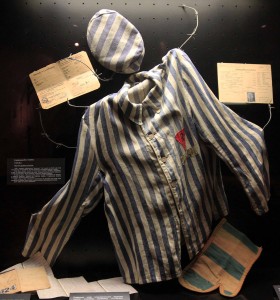
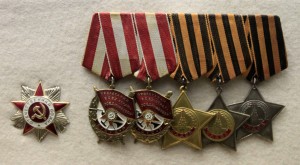
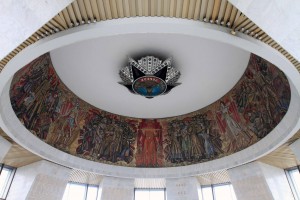
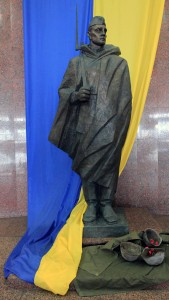
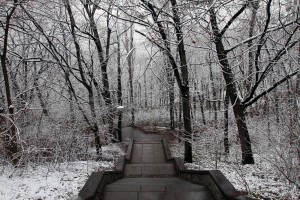
Despite going to bed after 04:00, I managed to get out of bed at 08:40, shower, dress, and get ready to explore Kiev. I also had to grab my umbrella because it was snowing outside – it actually snowed all day, alternating between light flurries to a heavy snowfall, which blew towards me from all directions. From the hostel, I walked past the familiar sites of St. Andrew’s Church, St. Michael’s Golden-Domed Monastery, and Maidan Nezalezhnosti whilst on my way to the National Art Museum of Ukraine. I arrived at the museum at 09:58 and waited two minutes before the doors opened. I then walked through each hall and looked at the different paintings on display from their collection; basically there were two exhibits spread across the halls: one showcasing blacklisted artworks that should have been destroyed during the Soviet Union era; the other displayed heroism in art (mostly depictions of laborers from the Soviet days, but also several orthodox church paintings of saints and martyrs). After spending about two hours in the art museum, I walked back out in to the harsh cold. I walked next to Mariyinsky Palace, the official ceremonial residence of the President of Ukraine, which adjoins the neo-classical building of the Verkhovna Rada (“Parliament”) of Ukraine. The palace was ordered to be constructed in 1744 AD by the Russian Empress Elizaveta Petrovna, and was designed by Bartolomeo Rastrelli; it was completed in 1752 AD; in the early nineteenth-century AD, the palace burned down in a series of fires and, in 1870 AD, Alexander II of Russia had the palace reconstructed by the architect Konstantin Mayevsky, using old drawings and watercolors as guide; the palace was then badly damaged in World War II and reconstructed; currently, the palace is undergoing renovation work and has a solid green fence around it except for the main entrance gate. Next, I walked through Mariyinsky Park, which looked wonderful in the fresh snowfall, but I didn’t enjoy it much since my fingers and face were freezing. I then walked to the Kiev-Pechersk Historic-Cultural Preserve (or “Kiev Pechersk Lavra”), which was founded as a cave monastery in 1051 AD and is a preeminent center of the Eastern Orthodox Christianity in Eastern Europe (one of three main pilgrim sites I’m told, which also includes Jerusalem and Mount Athos in Greece). The Kiev Pechersk Lavra contains many different structures (mostly churches, bell towers, monks’ cells, and cafes); the most prominent buildings at Kiev Pechersk Lavra are the Dormition Cathedral, Great Lavra Bell Tower, and the Refectory Church. I entered the complex through the main entrance (through the Gate Church of the Trinity) and then went inside the Dormition Cathedral, which was covered in frescoes and had a massive and ornate templon (no photographs were allowed inside). Next, I entered in to the Great Lavra Bell Tower, paid the entrance fee, and climbed up the stairs to the halfway section (the upper levels were closed off); from there, I was blasted by wind and snow, but managed to get some bird’s eye photographs of Kiev Pechersk Lavra. After visiting the bell tower, I went to one of the cafes to warm up and I had an Americano and a cheesecake with jam. After that snack, I tried to enter the Refectory Church, but was denied – apparently, admittance is only granted to members of the church . . . or at least to those who speak Ukrainian/Russian to the guard at the entrance door. I then walked to the cave complex and entered in to the long corridor that descends to where the caves are, at the low end of Kiev Pechersk Lavra; this corridor was filled with vendors and I don’t recall ever visiting a holy site that had as many gift shops, stalls, and vendors as this place does – I guess it’s good to be a pilgrimage site for money’s sake. I walked through the corridor and entered in to what looked like a chapel that was divided by a velvet rope, which was dropped every now and then for worshippers to pass by; I figured I would be denied entrance again, so I walked around the chapel, through more gift shops. I then reached a final chapel that had an entrance to the caves below; I waked through the door and a long tunnel that led to a crypt with many the tombs of many saints; I didn’t spend any time down there once I realized the door to the crypt itself was marked “Exit;” I figured I probably wasn’t allowed down there since I’m not an “Orthodox Christian” and I didn’t want to offend anyone (maybe visitors aren’t allowed on Sundays?); so I left the crypt, exited the caves, and then exited the building. I then walked back to the upper part of the Kiev Pechersk Lavr and took some more photographs of the buildings before exiting the compound and walked southeasterly to the Motherland Monument. I walked through the park surrounding the monument and looked at the many military vehicles (both land and air types) on display. I then reached the Motherland Monument (a giant statue of a woman holding a sword and a Soviet-crested shield) and entered in to the Great Patriotic War Museum underneath the monument. Inside the museum, I walked through each of the exhibit halls and looked at the artifacts left over from World War II; the halls took me from the Nazi buildup, the Nazi invasion, the defense of Kiev, the battles in Russia (Moscow, Stalingrad, and Leningrad), the defense of the Crimea, the Soviet offensive, and the end of the war. After touring the museum, I returned to the freezing elements outside and walked down to a main highway. I then walked to the nearest subway station and traveled to the Central Railway Station to purchase my follow-on ticket to Lviv (once again, no one spoke English and there were no signs for tourists, so it was painful just trying to figure out the correct window to approach (apparently where the lone English-speaker in the station is located) in order to procure my train ticket). After getting my train ticket, I returned to the subway and used it to travel to the station nearest the hostel I was staying at. Once back in the hostel, I spent the next couple of hours typing, going through my pictures, and updating the website. At 21:00, I walked downstairs to the café adjoined to the hostel and had some beer, an “Italian burger,” French fries, and a cappuccino; I then returned to the empty dormitory room (the past two nights had other guests, but they all appear to stay for just one night before moving on) to type out some more journal entries. I finally went to sleep around 02:00.
